1961: Fearing that another failure on the part of the U.S. to stop communist expansion would fatally damage U.S. credibility with its allies, Kennedy told reporter James Reston: "Now we have a problem in making our power credible and Vietnam looks like the place."[11] The commitment of the defend Vietnam was reaffirmed by Kennedy on 11 May in National Security Action Memorandum 52 which became known as "The Presidential Program for Vietnam". Its opening statement reads:
"U.S. objectives and concept of operations [are] to prevent communist domination of South Vietnam; to create in that country a viable and increasingly democratic society, and to initiate, on an accelerated basis, a series of mutually supporting actions of a military, political, economic psychological, and covert character designed to achieve this objective."
Kennedy was intrigued by the idea of utilizing U.S. Army Special Forces for counterinsurgency conflicts in Third World countries threatened by the new "wars of national liberation".
May 1961 — Kennedy sends 400 United States Army Special Forces personnel to South Vietnam to train South Vietnamese soldiers in guerilla warfare following a visit to the country by Vice-President Johnson.
June 1961 — Kennedy meets with Khrushchev in Vienna. He protests North Vietnam's attacks on Laos and points out that the U.S. was supporting the neutrality of Laos. Both leaders agree to pursue a policy of creating a neutral Laos.
October 1961 — Following successful NLF (North Vietnam) attacks, Defense Secretary Robert S. McNamara recommends sending six divisions (200,000 men) to Vietnam.
1962: The Diem regime had been initially able to cope with the insurgency with the aid of U.S. materiel and advisers, and, by 1962, seemed to be gaining the upper hand. Senior U.S. military leaders received positive reports from the U.S. commander, General Paul D. Harkins of the Military Assistance Command, Vietnam or MACV. By the following year, however, cracks began to appear in the facade of success.
1963: In January a possible victory that was turned into a stunning defeat for government forces at the Battle of Ap Bac caused consternation among both the military advisors in the field and among politicians in Washington. In May 1963 Republican Barry Goldwater declares that the U.S. should fight to win or withdraw from Vietnam.
In November, the U.S. embassy in Saigon communicated through the CIA to the military officers that made up the conspiracy that the U.S. would not oppose the removal of Diem (the S. Vietnamese leader). The president was overthrown by the military and later executed along with his brother. After the coup, Kennedy appeared to be genuinely shocked and dismayed by the murders. (Top CIA officials were baffled that Kennedy didn't understand that this was a possible outcome.)
Chaos ensued in the security and defense systems of South Vietnam and, once again, Hanoi took advantage of the situation to increase its support for the insurgents in the south. South Vietnam now entered a period of extreme political instability, as one military junta replaced another in quick succession. Ironically, Kennedy was himself assassinated just three weeks after Diem. Kennedy sends just 16,000 before his death in November, 1963. He was automatically succeeded by Vice-President Lyndon B. Johnson, who declared on 24 November that the U.S. would continue its support of the South Vietnamese. During this period, the U.S. military involvement in South Vietnam dramatically increased and the 'Americanization' of the war began.
1964: On 27 July 1964 5,000 additional U.S. military advisors were ordered to South Vietnam, bringing the total U.S. troop commitment to 21,000. In a televised address, President Johnson argued that "the challenge that we face in Southeast Asia today "is the same challenge that we have faced with courage and that we have met with strength in Greece and Turkey, in Berlin and Korea, in Lebanon and in Cuba."
National Security Council members, including Secretary of Defense McNamara, Secretary of State Dean Rusk, and General Maxwell Taylor, agreed on 28 November to recommend that Johnson adopt a plan for a two-stage escalation of the bombing of North Vietnam." President Johnson had already appointed General William C. Westmoreland to succeed Paul D. Harkins as Commander of MACV in June 1964. (Under Westmoreland, the expansion of American troop strength in Vietnam took place. American forces rose from 16,000 during 1964 to more than 553,000 by 1969.)
1965: On 8 March 1965, 3,500 United States Marines came ashore at Da Nang as the first U.S. combat troops in South Vietnam, adding to the 25,000 U.S. military advisers already in place. On 5 May the 173d Airborne Brigade became the first U.S. Army ground unit committed to the conflict in South Vietnam. The Battle of Ia Drang was the first major battle of the Vietnam War between the United States Army and the People's Army of Vietnam (PAVN). The two-part battle took place between November 14 and November 18, 1965.
Operation Rolling Thunder was the code name given to a sustained strategic bombing campaign targeted against North Vietnam by aircraft of the U.S. Air Force and Navy that was inaugurated on 2 March 1965. After more than a million sorties were flown and three-quarters of a million tons of bombs were dropped, Rolling Thunder was ended on 11 November 1968. [13]
On 27 November 1965, the Pentagon declared that if the major operations needed to neutralize North Vietnamese and NLF forces were to succeed, U.S. troop levels in South Vietnam would have to be increased from 120,000 to 400,000. In a series of meetings between Westmoreland and the president held in Honolulu in February 1966, Westmoreland argued that the U.S. presence had succeeded in preventing the immediate defeat of the South Vietnamese government, but that more troops would be necessary if systematic offensive operations were to be conducted. The adoption of this strategy, however, brought Westmoreland into direct conflict with his Marine Corps commander, General Lewis Walt, who had already recognized the security of the villages as the key to success. Walt had immediately commenced pacification efforts in his area of responsibility, but Westmoreland was unhappy, believing that the Marines were being underutilized and fighting the wrong enemy.
1966: In the end, MACV won out and Westmoreland's search and destroy concept, predicated on the attrition of enemy forces, won the day. It is ironic that at this point in the conflict, both sides chose similar strategies. The PAVN, which had been operating a more conventional, large-unit war, switched back to small-unit operations in the face of U.S. military capability. The real struggle now began in the villages, where the "hearts and minds" of the Vietnamese peasants, whose cooperation was absolutely necessary to military success, were to be won or lost. Unfortunately for the U.S., it had given responsibility for this struggle to the ARVN, whose troops and commanders were notoriously unfit for the task. Only time would tell which side would feel the pain of the attritional war first and concede victory to the other side.
Since the goal of the operations was to kill the enemy, ground was not taken and held as in previous wars. Savage fighting and the retreat of the enemy was immediately followed by the abandonment of the terrain just seized, leaving the Americans only in control of the ground upon which they stood. Combined with this was the anger and frustration engendered among American troops by the effective tactics of the NLF, who conducted a war of sniping, booby traps and mines, and terror against the Americans.
President Johnson authorized an increase in troop strength to 429,000 by August 1966.
1967: Late in 1967, Westmoreland said that it was conceivable that in two years or less U.S. forces could be phased out of the war, turning over more and more of the fighting to the ARVN[14]He should have known better.... General Westmoreland's public reassurances that the "light at the end of the tunnel" was about to be reached were barely out of his mouth when, on 30 January 1968, PAVN and NLF forces broke the truce that accompanied the annual Lunar New Year (Tet) holiday and mounted their largest offensive thus far in the conflict in hopes of sparking a "General Uprising" among the South Vietnamese. These forces, ranging in size from small groups to entire regiments, attacked nearly every city and major military installation in South Vietnam.
The Tet Offensive came to embody the growing credibility gap at the heart of U.S. government statements. These realizations and changing attitudes forced the American public (and politicians) to face hard realities and to reexamine their position in Southeast Asia. The days of an open-ended commitment to the conflict were over. The psychological impact of the Tet Offensive effectively ended the political career of Lyndon Johnson. On 11 March, Senator Eugene McCarthy won 42 percent of the vote in the Democratic New Hampshire Primary.
1968: U.S. and DRV negotiators met in Paris on 10 May 1968 for the opening session of the peace talks....For five months, however, the negotiations stalled as neither Hanoi nor Washington was willing to give ground that would allow full negotiations to begin....One of Nixon's main foreign policy goals had been the achievement of a breakthrough in U.S. relations with China and the Soviet Union. An avowed anti-communist since early in his political career, Nixon could make diplomatic overtures to the communists without being accused of being "soft." The result of his overtures was an era of détente that led to nuclear arms reductions by the U.S. and Soviet Union and the beginning of a dialogue with China. In this context, Nixon viewed Vietnam as simply another limited conflict forming part of the larger tapestry of superpower relations....
On 16 March 1968, three companies of Task Force Barker, part of the Americal Division, took part in a search and destroy operation near the village of My Lai, in Quang Nam Province. ...The morality of U.S. participation in the conflict was a major political issue both in the U.S. and abroad. First, there was the question whether America should have interfered in what was generally considered to be a civil war. Second, was a proxy war, without a clear and decisive path to victory, worth the number of casualties that were being sustained by both combatants and civilians? Third, there was the question how the American military, which depended on the use of massive amounts of firepower (which tended to hold down casualties), could fight a war against an elusive enemy that was often indistinguishable from the civilian population. Neither (side in the Peace negotiations) gave way until late in October when Johnson issued preliminary orders to halt the bombing of North Vietnam (which ended on 11 November).
1969: Investigative journalist Seymour Hersh exposed the My Lai massacre in print and the Haeberle photos splashed across the world media. (The Vietnam War Crimes Working Group Files made public in 1994 by the "Freedom of Information Act" reveal seven, albeit smaller, massacres previously unacknowledged by the Pentagon.[citation needed] It must also be stated that all of the allegations combined only add up to a fraction of the political murders carried out by the NLF and North Vietnamese Army during the conflict.)
1970: Before 1970 two thousand incursions into Cambodian territory that were backed by primarily tactical bombing operations, despite Cambodia's claims of neutrality. Thereafter General Creighton Abrams, recommended to newly-inaugurated President Richard Nixon, that the base areas be attacked by aerial bombardment using B-52 bombers. Nixon authorized the campaign, which totalled more than 3000 sorties over 14 months. The expansion of the conflict into Cambodia was seen as a direct escalation of the conflict, nullifying Nixon's promises of de-escalating the war. During the ensuing protests, four students were shot and killed and a score were wounded by Ohio National Guardsmen during a demonstration at Kent State University. In an effort to lessen opposition to the U.S. commitment, Nixon announced on 12 October that the U.S. would withdraw 40,000 more troops from Vietnam before Christmas.
1971: The credibility of the U.S. government again suffered in 1971 when The New York Times, The Washington Post and other newspapers serially published The Pentagon Papers (actually U.S.-Vietnam Relations, 1945-1967). The Times began publishing excerpts as a series of articles on June 13. The total number of U.S. forces in South Vietnam dropped to 196,700 on 29 October, the lowest level since January 1966. The "Winter Soldier Investigation" was a media event intended to publicize war crimes and atrocities by the United States Armed Forces and their allies in the Vietnam War....The three-day gathering of 109 veterans and 16 civilians in Detroit, Michigan, from January 31-February 2, 1971, was organized by the Vietnam Veterans Against the War (VVAW). Honorably discharged soldiers, as well as retired civilian contractors and medical personnel, all gave testimony about war crimes they had committed or witnessed during the years of 1963-1970.
1972: During the run-up to the 1972 presidential election, the war was again a major issue. ....the withdrawal of American troops, who now numbered less than 100,000 at the beginning of the year, was continued as scheduled. By June only six infantry battalions remained. On 12 August, the last American ground combat troops left the country....force levels were then down to 27,000. Because of a disagreement with the South Vietnamese President Thieu Nixon and to reassure him of US resolve, Nixon committed the US to large raids against both Hanoi and Haiphong on December 18. Nixon justified his actions by blaming the impasse in negotiations on the North Vietnamese, causing one commentator to describe his actions as "War by tantrum."
1973: On 15 January 1973, citing progress in peace negotiations, Nixon announced the suspension of all offensive actions against North Vietnam, to be followed by a unilateral withdrawal of all U.S. troops. The Paris Peace Accords on 'Ending the War and Restoring Peace in Vietnam' were signed on 27 January, officially ending direct U.S. involvement in the Vietnam War.
1974: The president was able to exert little influence on a hostile public long sick of the Vietnam War. Nixon was unable to fulfill his promises to Thieu to maintain economic aid. ....most of it was siphoned off by corrupt officials in the South Vietnamese government, and little actually went to the military effort and the amount of expected aid had been cut in half.... At the same time, aid to North Vietnam from the Soviet Union increased....The balance of power shifted decisively in North Vietnam's favor, and the north subsequently launched a major military offensive against the south.
1975: In December 1974, the Democratic majority in Congress had passed the Foreign Assistance Act of 1974, which cut off all military funding to the South Vietnamese government and made unenforceable the peace terms negotiated by Nixon. Nixon, threatened with impeachment because of Watergate, had resigned his office. Gerald R. Ford, Nixon's vice-president stepped in to finish his term. The new president vetoed the Foreign Assistance Act, but his veto was overridden by Congress.
By the end of April, a weakened South Vietnamese military had collapsed on all fronts. On the 27th, 100,000 North Vietnamese troops encircled Saigon, which was defended by only about 30,000 ARVN troops. In order to increase panic and disorder in the city, the VPA began shelling the airport and eventually forced its closure. With the air exit closed, large numbers of civilians who might otherwise have fled the city found that they had no way out. On 29 April, the U.S. launched Operation Frequent Wind, arguably the largest helicopter evacuation in history. South Vietnam was now perceived as doomed. In the early morning hours of 30 April, the last U.S. Marines evacuated the embassy roof by helicopter as civilians poured over the embassy perimeter and swarmed onto its grounds.
On that day the presidential palace was captured and the NLF flag waved victoriously over it. Thieu's successor, President Duong Văn Minh attempted to surrender Saigon, but VPA Colonel Búi Tín informed him that he did not have anything to surrender. Minh then issued his last command, ordering all South Vietnamese troops to lay down their arms.
Thursday, December 7, 2006
VIETNAM WAR TIME LINE, TAKEN FROM WIKIPEDIA, WITH EDITS
Subscribe to:
Post Comments (Atom)
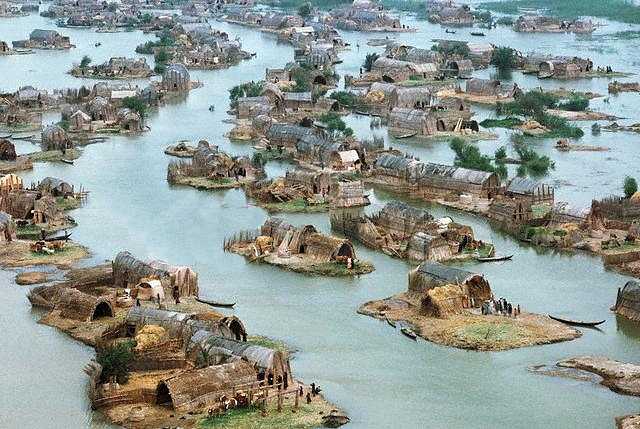
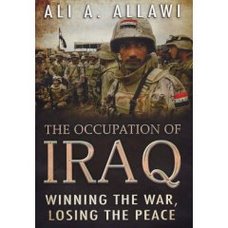
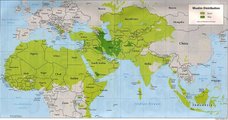
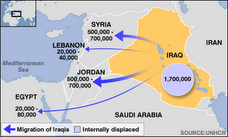
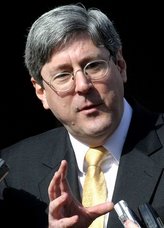
No comments:
Post a Comment